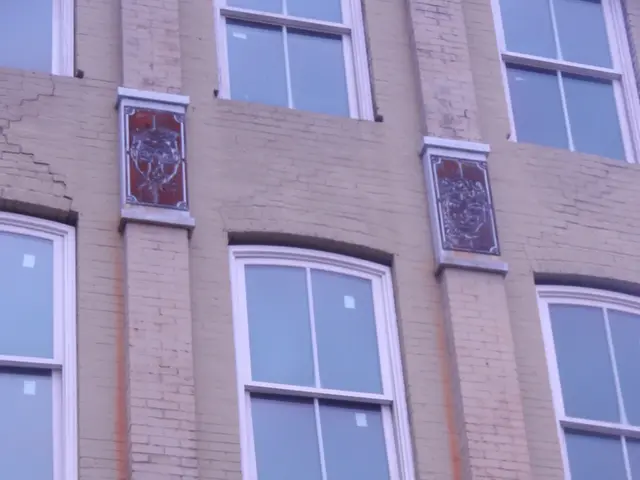History of Mid-Century Modernism in Palm Springs: A Short Overview
In the heart of the Californian desert lies Palm Springs, a city synonymous with mid-century modernism. From the late 1940s to the 1960s, this oasis flourished as the cradle of a unique architectural movement that integrated indoor-outdoor spaces, clean lines, and innovative design, all inspired by post-war prosperity and technological advancements.
Iconic architects such as Richard Neutra and John Lautner left their indelible mark on Palm Springs, using the desert landscape as a starting point for their creations. These visionary architects created homes that seamlessly blended with the surrounding environment, while reflecting the optimism and desire for simplicity that characterized the era. The result was a harmonious fusion of architecture and nature that continues to captivate visitors and inspire contemporary designers.
The cultural and economic conditions of post-war America played a significant role in shaping the principles of mid-century modernism. The resurgence of interest in this movement offers contemporary architects valuable lessons that can be applied to today's designs, fostering a dialogue between the past and the present.
As we explore the enduring legacy of mid-century modernism in Palm Springs, let's reflect on how the elegance of modernist elements, such as integration with nature, the use of glass, flat planes, and open spaces, impact our perception and emotional connection with the spaces we inhabit. Perhaps, we can find inspiration in how modernist principles are already influencing modern architecture in our own environment.
In 2024, modernism enthusiasts will flock to Palm Springs for the annual Modernism Week, an event showcasing the city's rich architectural heritage. The gathering offers interactive tours, informed discussions, and engaging activities, inviting attendees to immerse themselves in the mid-century modern style that has become synonymous with Palm Springs.
The story of Palm Springs and mid-century modernism is one of transformation and enduring allure. By examining the stories, architects, and designs that shaped this desert city, we not only uncover the past but are also reminded of the enduring appeal and timeless value of modernist principles.
Exploring the Factors that Shaped Mid-Century Modernism in Palm Springs
Palm Springs emerged as an architectural treasure during the mid-20th century, thanks to an intricate interplay of factors:
- Celebrity patrons, enamored with the comfortable desert climate and leisurely lifestyle, bought land and built homes in Palm Springs, sparking demand for distinctive modernist architecture.
- Enthusiastic architects from nearby Los Angeles saw the desert landscape as an exciting canvas, experimenting with innovative forms, materials, and incorporating natural elements like rocks into structures.
- The design philosophy prioritized natural views and seamless indoor-outdoor living, deepening the connection between residential spaces and the surrounding environment.
- The development of signature neighborhoods, such as Twin Palms and Vista Las Palmas, served as hubs for mid-century modern architecture, helping to preserve the style locally.
- The post-World War II economic boom fostered an optimistic, forward-looking architectural style, while a decline after the 1970s economic downturn led to preservation efforts to protect the movement's legacy.
Reflecting on the Lessons of Mid-Century Modernism
Reflecting on the principles of mid-century modernism allows us to appreciate the connection between architecture and nature, as well as the importance of simplicity, functionality, and adaptability in design. By embracing these values, contemporary architects can create spaces that not only meet the needs of modern life but also provide an emotional and sensory connection to the world outside.
As you walk through the homes, buildings, and landscapes of Palm Springs, pause to appreciate the timeless elegance of mid-century modernism - a testament to the power of good design and the enduring allure of the California desert.
Sources:1. "The Architecture of Palm Springs / Mid-Century - Architectural Field Guide." Architectural Field Guide, n.d. Web. 26 May 2023.2. "Palm Springs Modern Architecture Tour." Palm Springs Modern Architecture Tour, n.d. Web. 26 May 2023.3. "Modernism in Palm Springs History." City of Palm Springs, n.d. Web. 26 May 2023.4. "Palm Springs Modern Architecture and Design Tour Map." Palm Springs Urban Hike, n.d. Web. 26 May 2023.5. Green, Wingate. "Preserving and Understanding Palm Springs Midcentury Modern Architecture." Preservation Institute: Cultural Resources Group, 2005. Web. 26 May 2023.6. "Mid-Century Modern Architecture in Palm Springs." Palm Springs Bureau of Architecture and Historic Preservation, 2010. Web. 26 May 2023.7. "The Evolution of Palm Springs' Iconic Mid-Century Modern Architecture." The Palm Springs Modernism Show, 2018. Web. 26 May 2023.
- As Modernism Week approaches in 2024, attendees will not only marvel at Palm Springs' architectural heritage but also gain insights into how the ethos of mid-century modernism continues to influence contemporary design.
- The significance of Palm Springs as an architectural hub extends beyond the esteemed Modernism Week, as the city's cultural and economic conditions played a crucial role in shaping the principles of mid-century modernism.
- The allure of Palm Springs lies not only in its stunning mid-century modern architecture but also in the intricate interplay of factors that led to its widespread popularity, including celebrity patrons, innovative architects, and a focus on harmony between homes and the desert landscape.




